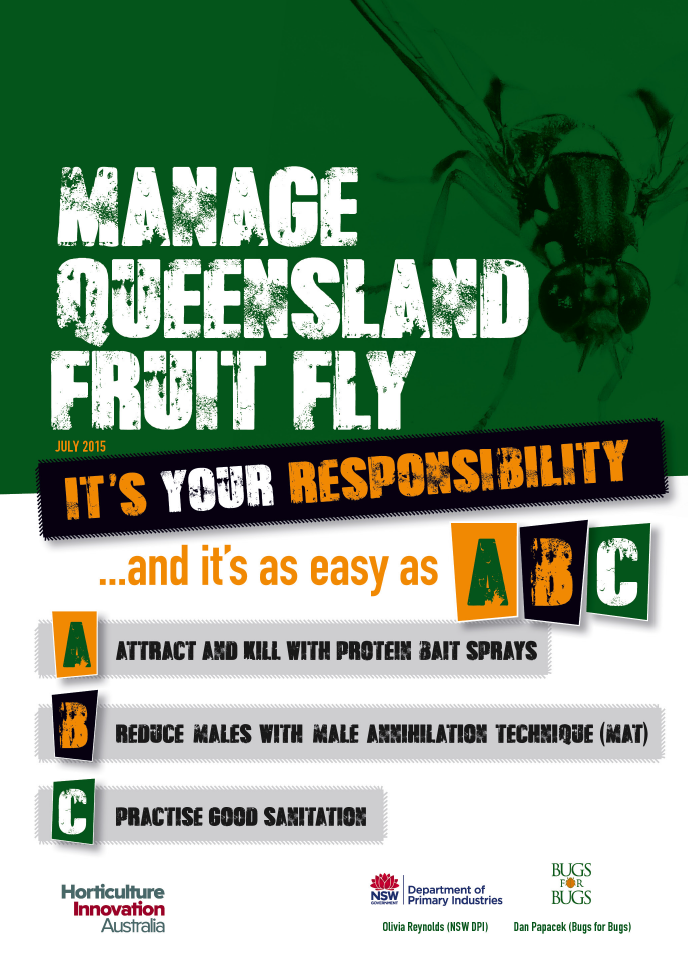Managing Fruit Fly
According to http://preventfruitfly.com.au, there are two main species of fruit flies within Australia: Queensland fruit fly (Bactrocera tryoni ) which occurs in the Northern Territory, Queensland, New South Wales and Victoria and is an Australian native species; and Mediterranean fruit fly (Ceratitis capitata) which occurs only in Western Australia, mostly in the south-western parts.
It is your responsibility to manage Fruit Fly populations on your property, and it’s as easy as ABC.
Queensland Fruit Fly (Bactrocera tryoni)
Adult flies are about 5 to 8mm in length in adult stage
Image: James Niland
Mediterranean Fruit Fly (Ceratitis capitata)
Fruit Fly sting marks shown on a purple variety
Download and review this handy four page guide produced by NSW Department of Primary Industries in conjunction with Bugs for Bugs and Hort Innovation. This guide specifies Queensland Fruit Fly although management techniques are similar for most of the tephritid group and so this applies equally to Mediterranean Fruit Fly management in WA.
Remember fruit stung by fruit fly is unsuitable for sale in the fresh market.
Useful links:
Bugs for Bugs – https://bugsforbugs.com.au/whats-your-pest/fruit-flies/
Biotrap – http://www.biotrap.com.au/articles/4/fruit-fly-baiting-with-hym-lure/
Eco-lure – https://ecoorganicgarden.com.au/products/pest-disease/eco-lure-male-queensland-fruit-fly-trap/
Area Wide Management for Fruit Fly
Area-Wide Management (AWM) is a proven management approach for mobile pests around the world, employing a united strategy to target all pest habitats within a well-defined area or region to reduce the total pest population.
The ‘Adaptive Area wide management of Qfly using SIT’ project is being delivered by Hort Innovation as part of its Hort Frontiers Fruit Fly Fund, and is supported by funding from the Australian Government Department of Agriculture & Water Resources as part of its Rural R&D for Profit program, and CSIRO.






